Not many people are aware that the cap for your car’s radiator or expansion tank comes with a spring-loaded mechanism that is pressure-rated to maintain an efficient working pressure in the radiator cooling system.
Most European cars over the last couple of decades were designed with these caps on the coolant reservoir tanks. Prior to that, cars before the turn of the millennium came with these caps fitted directly on top of the radiator. You would remember seeing one of these old metallic flat radiator caps, if you were old enough.
The cap thus serves more than just to keep the tank closed or to prevent dirt from entering in. So what happens when the cap is damaged? It would be interesting to first understand the reason and function of this radiator cap and how it works.
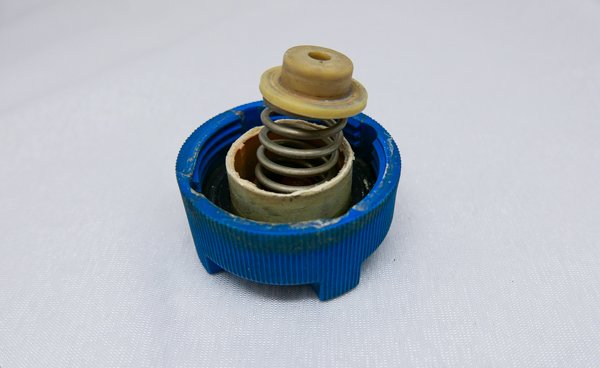
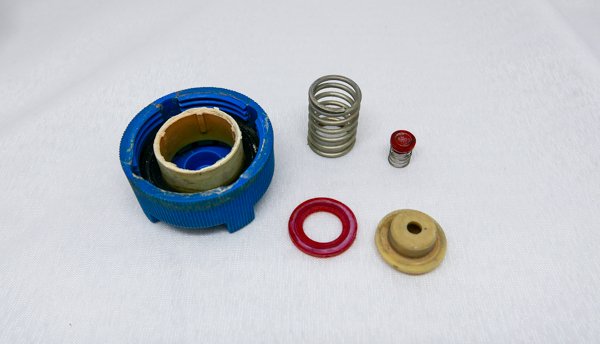
The Little Science Behind the Radiator Cap
The cap on the radiator or coolant expansion tank is not just a simple cap, and is actually a two-way pressure relief and check valve that functions in these manner:
- When the coolant is heated as the engine runs, the pressure is maintained to keep the coolant at a higher boiling point, so as to prevent the coolant from boiling out of the radiator system. You could think of this like a pressure cooker. However, as the coolant temperature rises and expands, if the pressure exceeds the rated pressure, the cap allows some of the coolant to escape. This protects the hoses and internal system from rupturing and bursting.
- When the engine is shut off at the end of a drive, the coolant begins to cool down and contract. This creates a vacuum situation within the engine chambers. Without a radiator cap on, air will be drawn into this vacuum space which could lead to corrosion and an adverse effect on the engine cooling. With the cap on, once the vacuum reaches a certain reverse pressure, coolant is channeled back in to the engine from the expansion tank or radiator, preventing air from filling the space. This is also the reason why it is important to keep your expansion tank or reservoir to its optimum maximum level and never allow it to fall below the minimum level mark.
Replacing a Damaged Radiator Cap
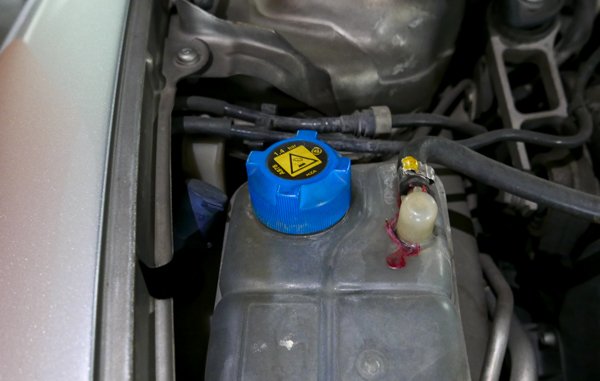
Replacing a damaged radiator cap is just a simple manner of discarding the old one, buying a new one and putting it in its place.
However, you will need to know the working pressure rating of your existing or original cap, so that you buy the correct one for your car. The pressure rating is often found on the top of the cap. In the photo above, you can see that the original cap has a 1.4 bar pressure rating.
The slight leakage of red coolant fluid via the hose that connects to the coolant reservoir as seen above is possibly an indication that the pressure relief valve on the cap may be damaged or no longer functioning as intended.
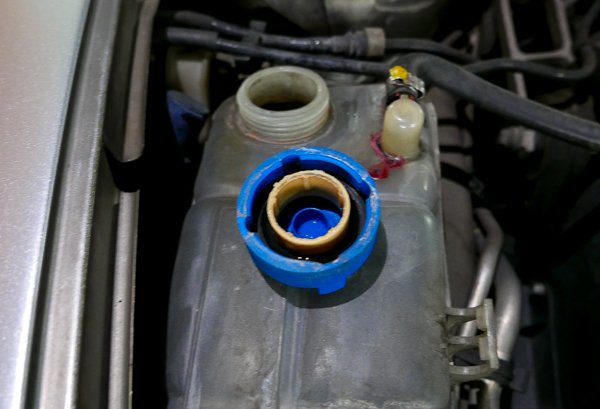
Remove the cap to inspect for damages. As seen above, the internal plastic housing of the cap is broken and the springs and seals are no longer found on the cap (refer to the first 2 photos at the top of this article). In fact, in my case above, they were found inside the coolant reservoir. Fortunately, they could be removed by hand and a pair of small pliers.
It wouldn’t be surprising that when you find your radiator cap damaged like so, you don’t happen to have a spare lying around you could replace with immediately.
In my case, after removing all the small loose components from the reservoir, I put the old radiator cap back on and placed an order online for a replacement cap. The old cap is still usable, PROVIDED that you don’t drive the car hard under extreme hot weather, and keep travel distances to less than 50 or 100 kilometres at a stretch. If you need to make a long-distance trip, you would have to wait for the replacement cap to arrive or buy one at the accessories shop.
I found a replacement cap on eBay with the correct specifications for my car – a 1.4-bar pressure-rated cap for the Alfa Romeo 147. The description page for this cap is as follows:
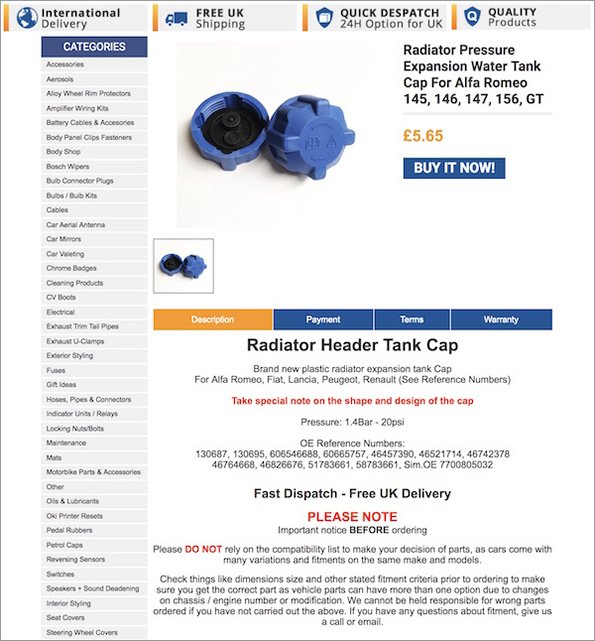
The replacement cap arrived shortly and fits somewhat a little more snug and tighter than expected, but it works.
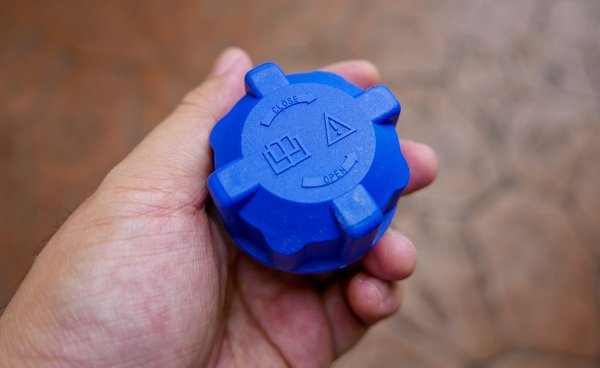
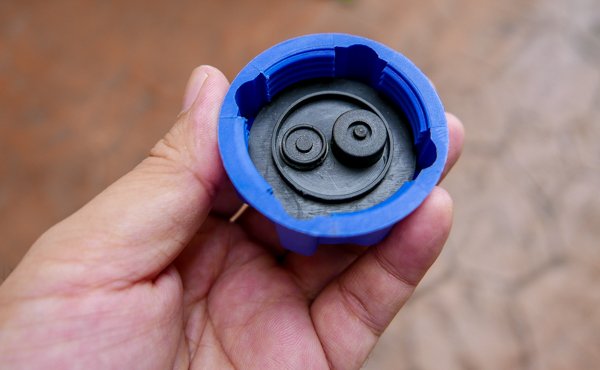
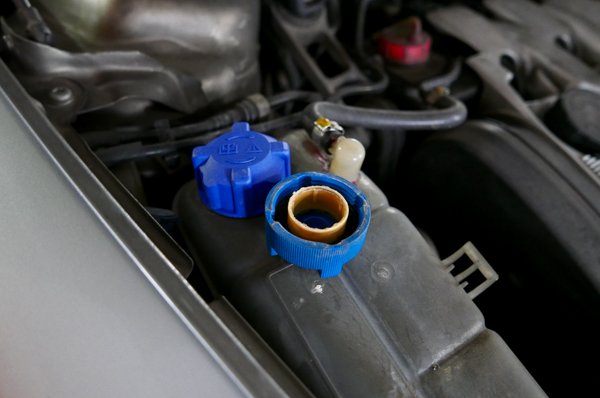
I have been driving the car for more than a month now and the car’s radiator cooling system works fine. There is no longer any coolant leakage on the reservoir, and the cap is working as it should.
To purchase the correct radiator cap replacement for your car, visit ebay.com and do a search for radiator cap and the make and model of your car.
To purchase a replacement Alfa Romeo 147 radiator coolant reservoir cap, please see the links below.
